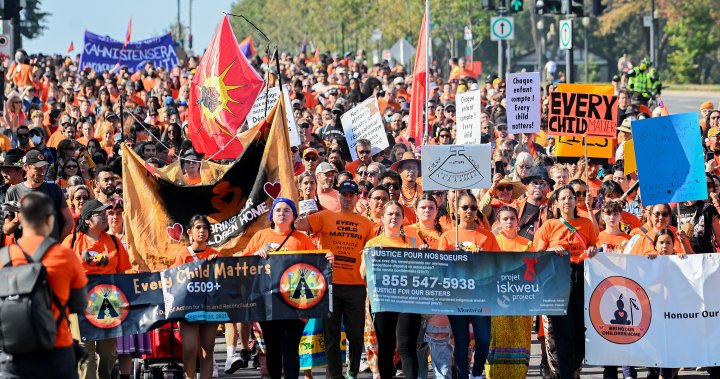A sea of orange flooded Montreal Saturday as people gathered to acknowledge systemic oppression of Indigenous people and observe the third annual National Day for Truth and Reconciliation.
The federal statutory holiday, adapted from the grassroots Orange Shirt Day, recognizes the abuse suffered by Inuit, First Nations and Metis people at hundreds of state-and church-run residential schools.
Hundreds of orange-clad marchers walked from the base of Mount Royal to the pedestal where a statue of John A. Macdonald, Canada’s first prime minister and an architect of the residential school system, stood until protestors toppled it in 2020.
Native Women’s Shelter of Montreal Executive Director Na’kuset, who uses only one name, said she hopes the march helps ”push the government to do better” and address systemic racism against Indigenous people.
Quebec Premier Francois Legault has denied the existence of systemic racism in the province, and the National Day for Truth and Reconciliation is not a statutory holiday at the provincial level.
“This day is not just one day. It should actually be every single day,” Na’kuset said.
Prime Minister Justin Trudeau, who was in Saskatchewan to observe the day, said the occasion is one to recognize sadness, anger and frustration.
“It’s a challenging day,” he said. ”It’s a day where all Canadians need to confront the fact that our past was not what we would want it to be.”
Gov.-Gen. Mary Simon, speaking at a ceremony in Ottawa, said that while Canada has moved forward on reconciliation in recent years, it still has far to go.
“It’s really important to remember that even though we are making progress on bigger issues, it’s not necessarily having an impact at the community level,” said Simon, who is Inuk and the first Indigenous governor general.
© 2023 The Canadian Press
Read the full article here











